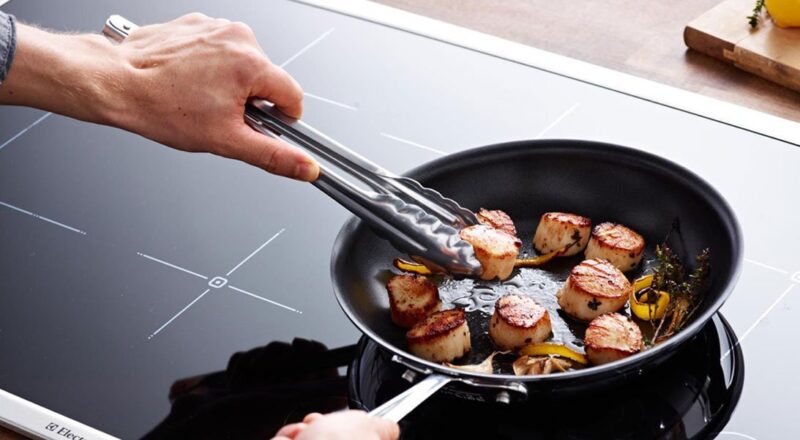When it comes to cooking, the importance of a cast iron base shape for stable heating cannot be overstated. Whether you’re a professional chef or a home cook, understanding the dynamics of your cookware can significantly improve your culinary outcomes. A well-designed cast iron base ensures even heat distribution, crucial for cooking various dishes perfectly. This article will explore how the shape of cast iron bases contributes to stable heating and why it’s vital for your kitchen.

Understanding Cast Iron Cookware
Cast iron cookware has been a staple in kitchens for centuries. Its durability and excellent heat retention make it a favorite among cooks worldwide. The base shape of this cookware plays a crucial role in how heat is distributed across its surface. A flatter base allows for more contact with the heat source, ensuring that the entire surface heats evenly. This is particularly important when using induction cooktops, where precise heat distribution is necessary for optimal cooking results.
The Science Behind Heat Distribution
The ability of a cast iron pan to maintain stable heating lies in its molecular structure. The dense metal conducts heat slowly but retains it for longer periods. This property makes it ideal for cooking techniques that require consistent temperatures, such as searing or frying. Additionally, the base shape ensures that the heat is distributed evenly, preventing any cold spots that could lead to uneven cooking.
Why Base Shape Matters
When choosing cast iron cookware, considering the base shape is essential. A well-designed base provides stability, ensuring that the pan remains level on the stovetop. This stability is crucial, especially when handling heavy foods or adding liquids to the pan. Moreover, a stable base prevents any wobbling, which can disrupt the cooking process and lead to spillage.
Choosing the Right Cast Iron Cookware
With numerous options available, selecting the right cast iron cookware can be daunting. Here are some factors to consider:
Size and Weight
The size and weight of the cookware should match your cooking style and needs. Larger pans offer more cooking surface but can be heavier, making them challenging to maneuver. On the other hand, smaller pans are lighter and easier to handle but might not be suitable for cooking large meals.
Compatibility with Heat Sources
Ensure that your chosen cookware is compatible with your heat source. Most cast iron cookware works well on gas, electric, and induction cooktops. However, it’s essential to check that the base is flat enough to sit securely on the surface, especially for induction cooktops.
Maintaining Your Cast Iron Cookware
Proper maintenance extends the lifespan of your cast iron cookware. Regular seasoning prevents rust and maintains the non-stick surface. Additionally, avoid using harsh detergents or abrasive sponges that can damage the cookware’s surface.
The Role of Induction Cooktops
Induction cooktops have gained popularity due to their energy efficiency and precise temperature control. They’re an excellent match for cast iron cookware because of their ability to heat quickly and evenly. To learn more about the benefits of pairing cast iron with induction, visit Field Company’s guide on induction cooktops.
Optimizing Cooking with Induction
To optimize cooking on induction cooktops, ensure that the cast iron base is flat and covers the induction ring adequately. This ensures efficient heat transfer and reduces cooking time. For more tips on using cast iron on induction, explore matching pan size with induction ring.
Common Issues with Cast Iron on Induction
While cast iron is generally compatible with induction cooktops, some users face issues such as uneven heating or cold spots. Understanding these challenges can help you troubleshoot and improve your cooking experience.

FAQs
Why does the base shape of cast iron cookware matter?
The base shape determines how evenly heat is distributed across the cooking surface. A flat, stable base ensures that the cookware sits securely on the stovetop, leading to more consistent cooking results.
How can I prevent my cast iron pan from wobbling?
Ensure that the base of the pan is flat and free from warping. Regular maintenance and avoiding rapid temperature changes can help maintain the pan’s shape.
Is cast iron compatible with all types of cooktops?
Yes, most cast iron cookware is compatible with gas, electric, and induction cooktops. However, it’s crucial to ensure that the base is flat for optimal performance on induction cooktops.
Conclusion
Understanding the importance of the cast iron base shape for stable heating can significantly enhance your cooking experience. By choosing the right cookware and maintaining it properly, you can enjoy the benefits of even heat distribution and stable cooking. For more insights into cookware, visit Le Creuset’s guide on cookware for induction hobs.
This article contains affiliate links. We may earn a commission at no extra cost to you.

